6th November - 12th November
Group D: Manali Panchal, Eric Dodd, Kate Chernysheva, Eda Erdal
Group D: Manali Panchal, Eric Dodd, Kate Chernysheva, Eda Erdal
IDEATION
This week, we took a step back to the research stage and ideate what could be done within the project as we entered panic mode.
Throughout my search for ideas, I stumbled upon a very interesting comparison where Anne Harrington (2001) also compares human beings to a sponge. It also reminded me of our skin’s absorbing functions as it soaks up products such as sunscreen or moisture. It is also very flexible and uniform. Immediately, we had a couple of rough ideas in front of us.


Some of the first sketches of the idea. sketched by Kate.
We decided to take our findings a little further and create a blanket that would show skin’s thermal receptors and show what skin feels like when you interact with it. To recreate the skin feeling we used the sponges. To show the element of temperature change we thought of using a material that changes colour, such as thermochromic paint. With some developmental work, we also thought this could simultaneously tackle the issues of loneliness and act as self-heating blankets for people who struggle with loneliness.


Some of our personal observations on skin and temperature. Pictures taken by Manali.
Upon discussion we quickly finalised our concept, created some sketches and a plan of action which included some testing, buying lots of sponges and thermochromic paint which was our biggest worry.
Sketch of our idea illustrated by Eric.
I took the responsibility to create the final prototype as well as experiment with materials and layers we needed in order for the paint to stick as well as for the glue to work with the sponges.


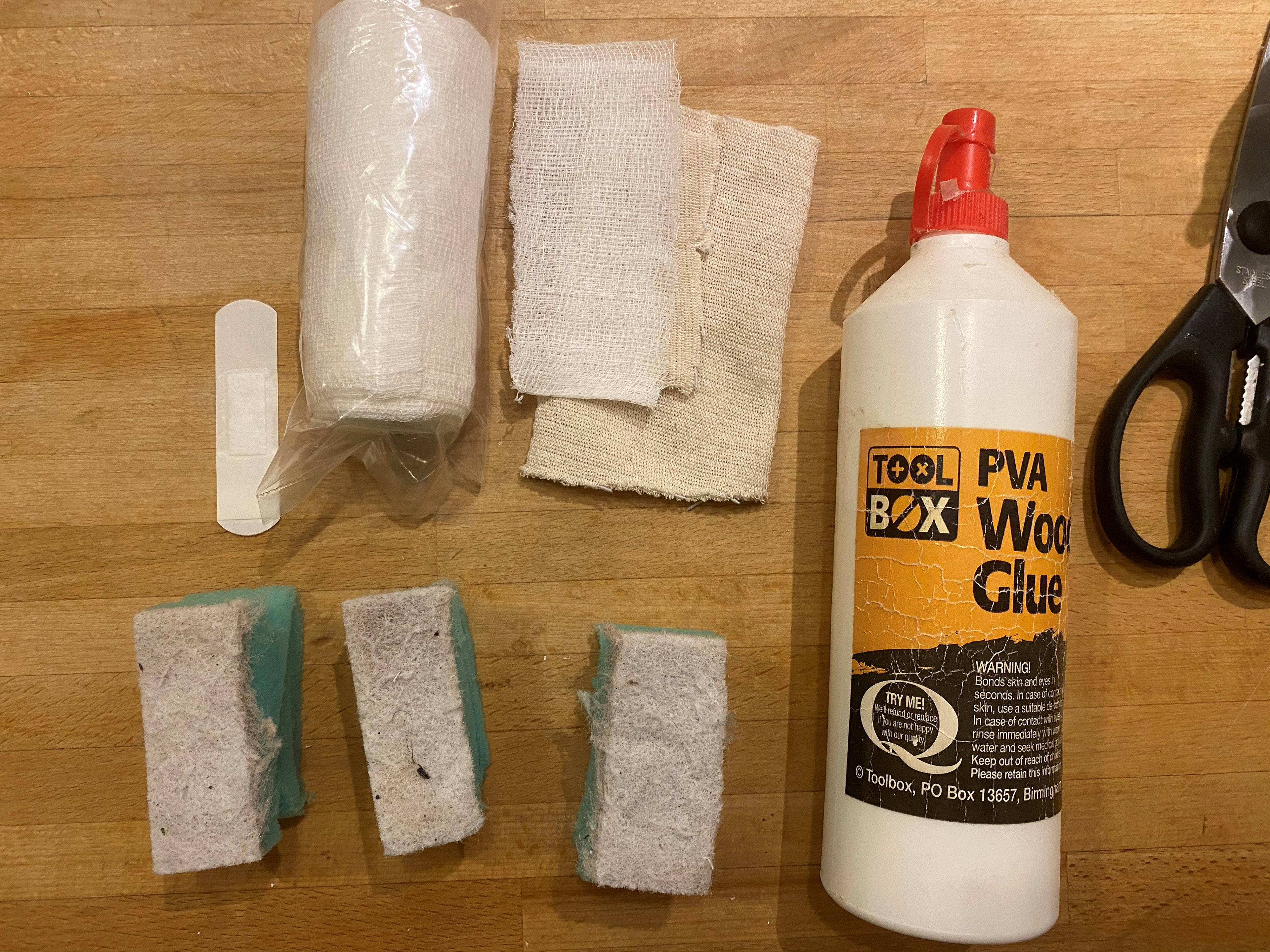
Testing: PVA glue, sponge and different materials. I used different types of band aids and paper towels. All eventually failed to stay in place. Pictures taken by Kate.
Sadly, the glue wasn’t working with either of the materials that were somehow close to the skin.

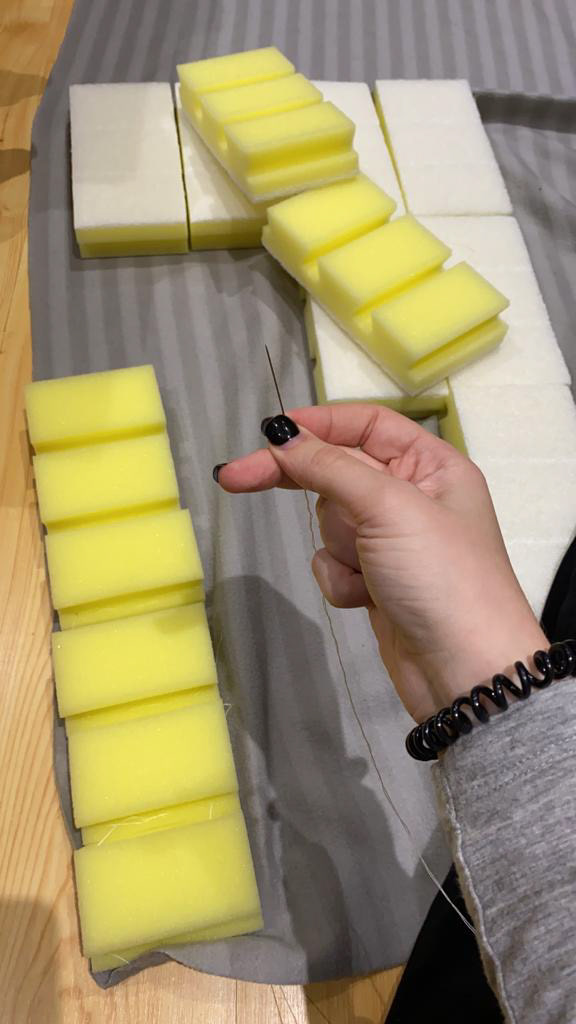


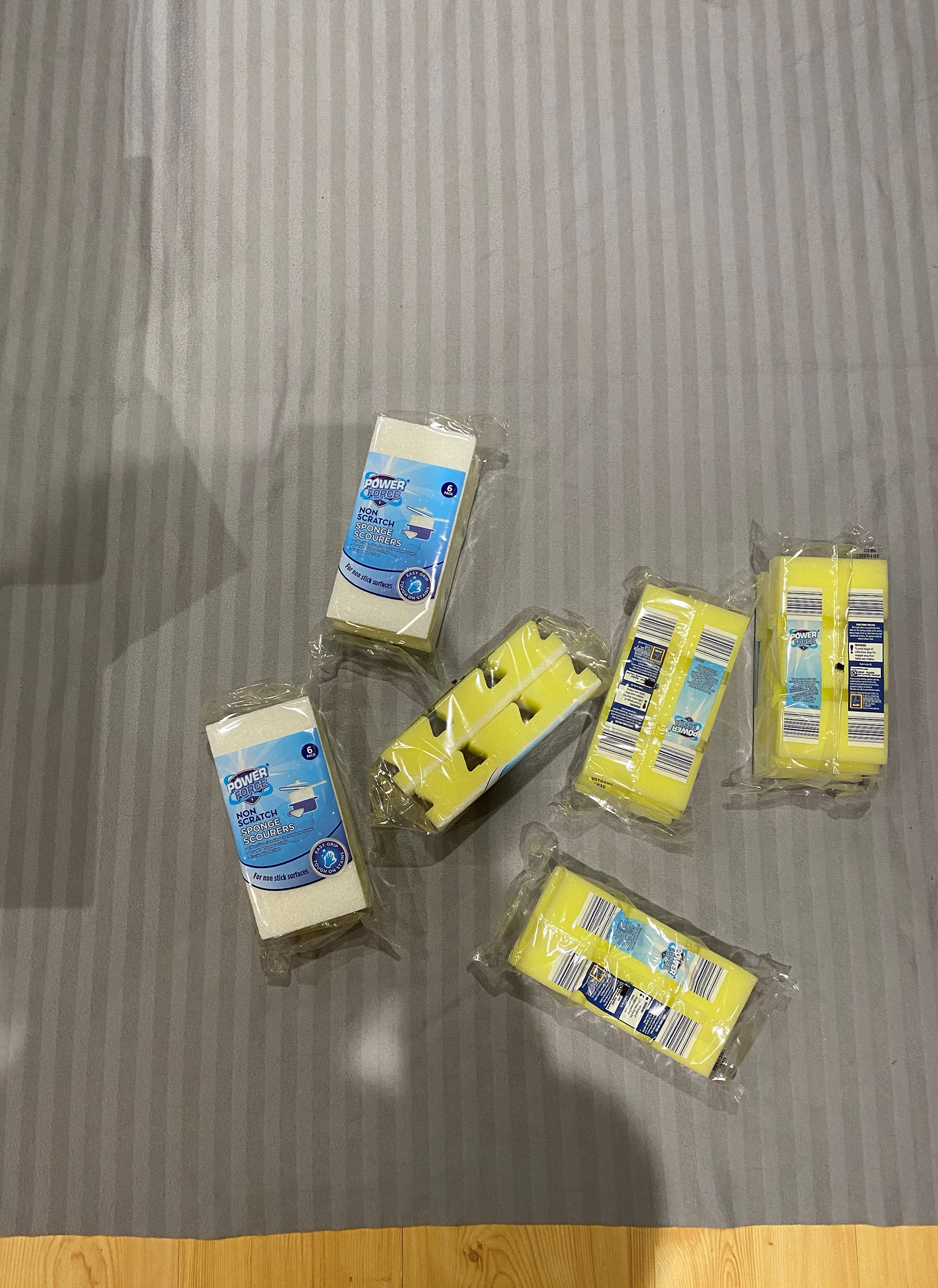
Creating the blanket. Sewing sponges together was the most efficient, but time consuming way of sticking them together. Pictures taken by Kate.
PREPARATION AND ITERATION
The day before the presentation was stressful. Thermochromic paint, which was the most crucial part, failed to arrive and we couldn’t find the material to put on top of the sponges. As a solution, we used Manali’s LED strip lights that could change colour with a remote, which fit perfectly within the sponge gaps. To create a better feel we wrapped the construction with bubble wrap. It wasn’t the closest material to skin, however, bubble wrap is known for its anti-stress qualities which are metaphorically similar to touching and interacting with another human.


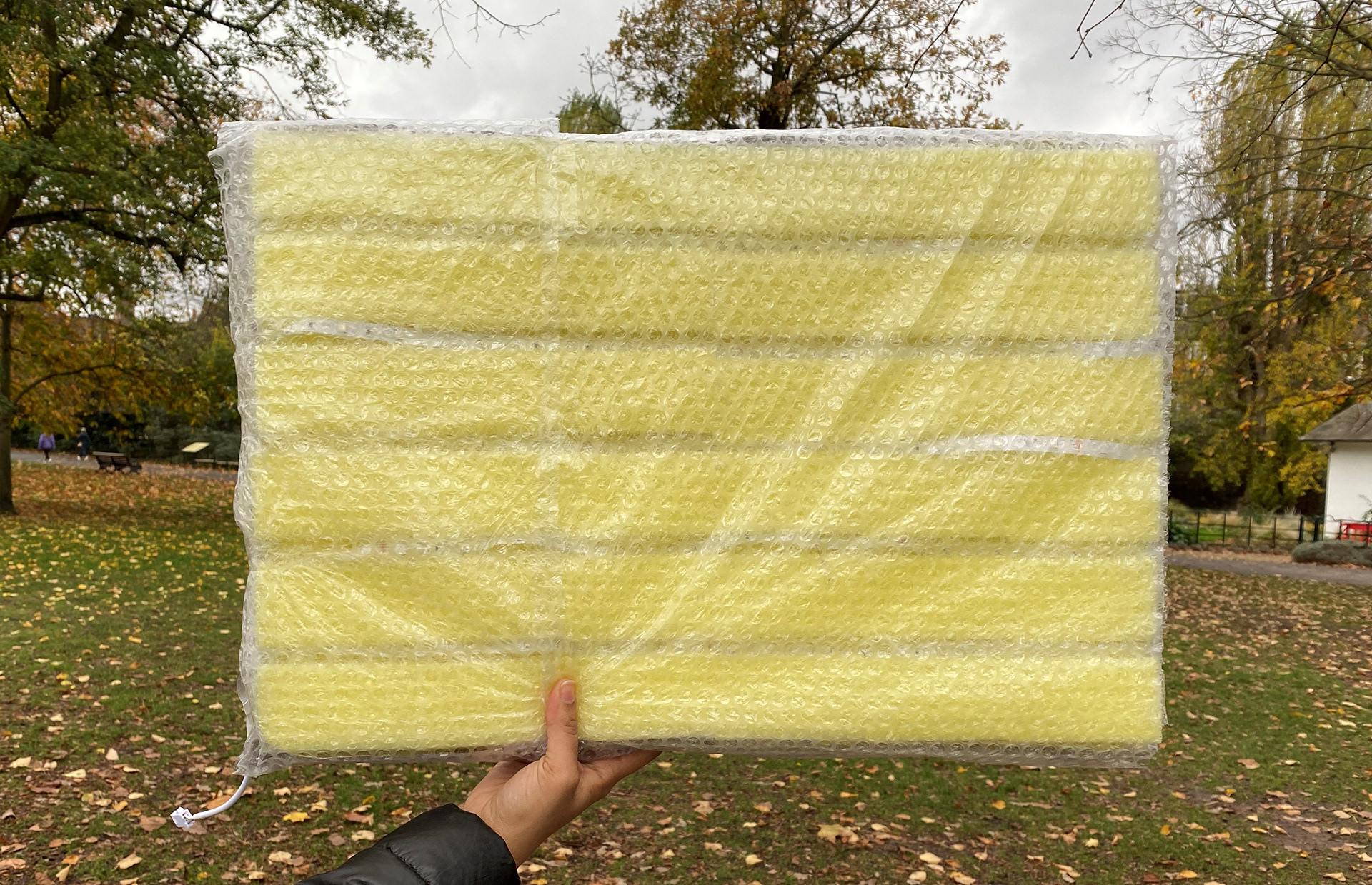
Last minute assembling at the park. Left-hand side and bottom picture taken by Kate, right-hand side picture taken by Manali.
Furthermore, Manali created an amazing prototype from rubber gloves and cotton which she later painted with the thermal paint, which arrived on the day of the presentation. Our prototype wasn’t perfect but we were very happy with what we have created and for a second, I think we managed to make everyone believe there wasn’t any remote controlling the lights and colours changed from warmer to colder as people were touching it.

Prototype created by Manali. Picture taken by Manali.


Final testing of the main prototype. Videos taken by Kate.
PRESENTATION
The logo I created for our product.



Pictures from the presentation day. Taken by John Fass.
A short video from the presentation. Taken by Ines.
REFLECTION
During our tutorial with John Fass, we talked about the definition of success and what it would look like within the project. This gave me a crucial understanding that a successful outcome is not about having a flawless prototype but about the learning process and a journey one undertakes. This brief taught us not to be afraid to fail as well as how important it is to be able to transfer our ideas from mental images into a physical prototype. This also highlighted the significance of research and having a good scope of the topic you are tackling. Even though our prototypes were rushed, I really liked the process and the end result as it showed our resilience and ability to think creative under pressure.
POST-PRESENTATION


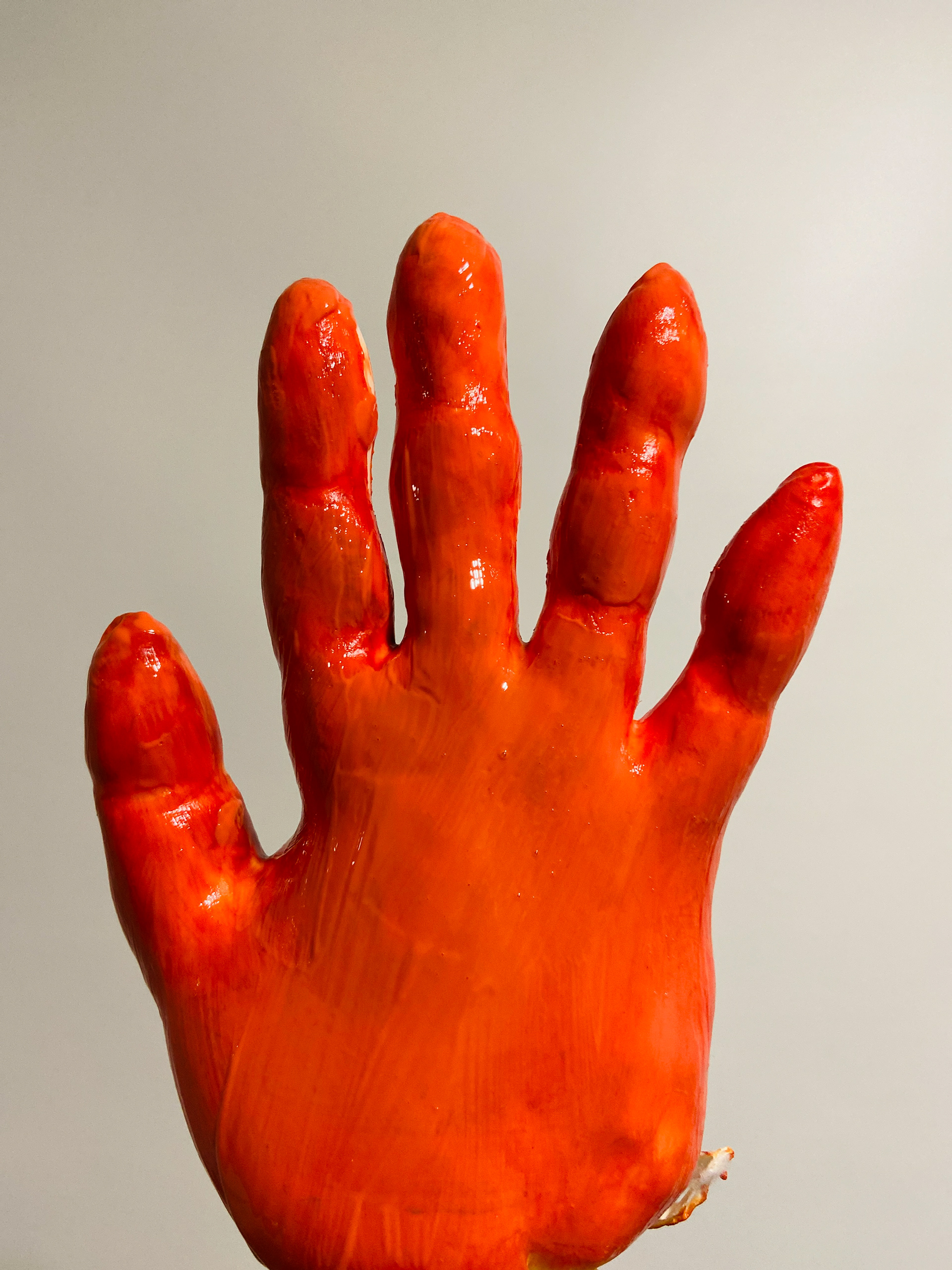
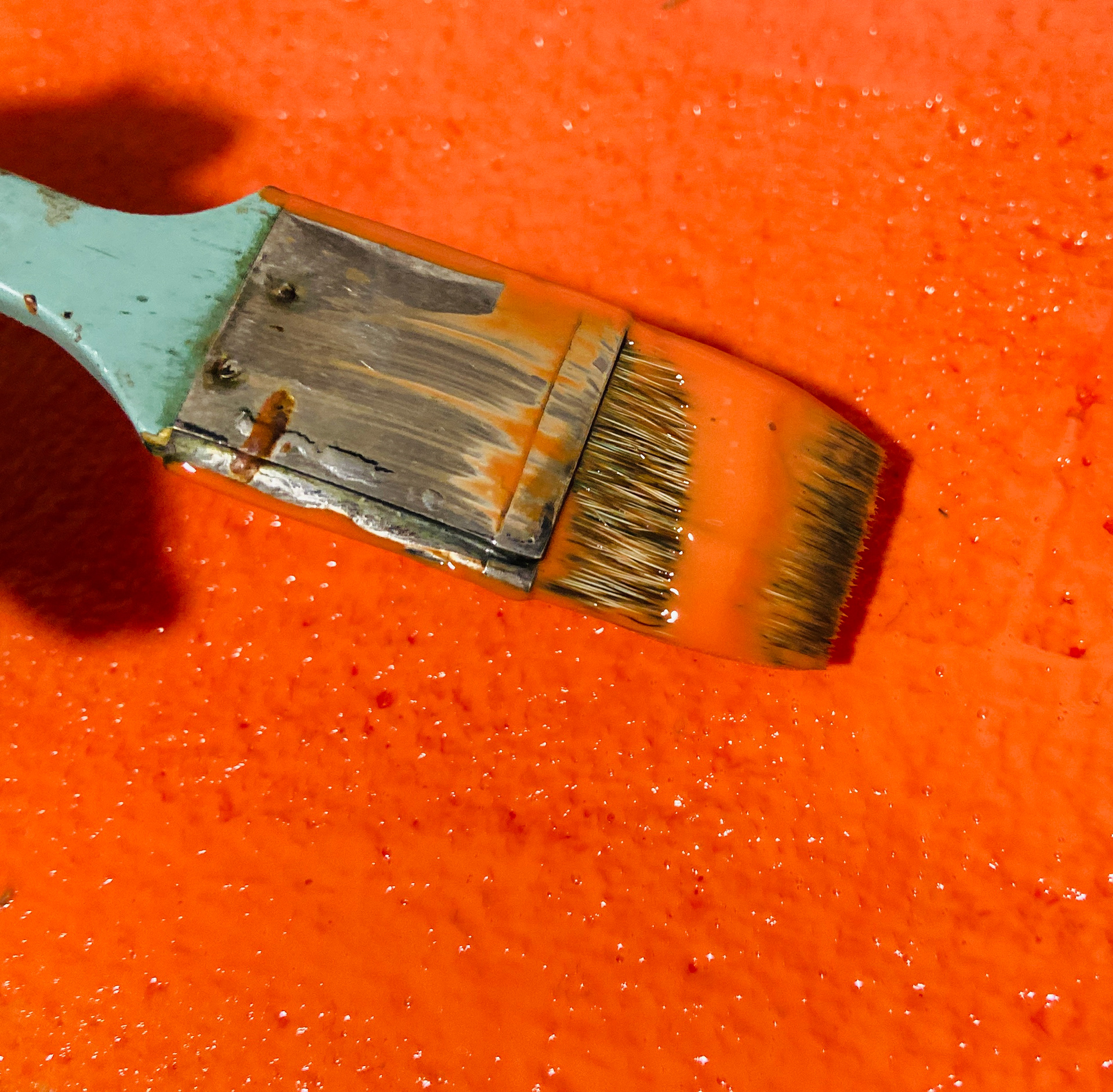



After the thermochromic paint arrived, we didn't give up and Manali painted the gloves prototype. Images and videos taken by Manali.
BIBLIOGRAPHY
Harrington, A. (2001). 'Getting under the skin'. Harvard University, Cambridge. Found here: https://tunies.com/wellness/did-you-know-your-skin-is-like-a-sponge/
NatureRich (2008). Your Skin is Like a Sponge. [online] Healthy Beginnings. Available at: https://hbmag.com/your-skin-is-like-a-sponge/ [Accessed 10 Jan. 2021].
MD Complete Skincare. (n.d.). Your Skin is Like a Sponge. [online] Available at: https://mdcomplete.com/blogs/news/your-skin-is-like-a-sponge [Accessed 10 Jan. 2021].
SFXC | Special FX Creative. (n.d.). Thermochromic Pigments and Colour Changing Coatings UK. [online] Available at: https://www.sfxc.co.uk/collections/thermochromatic-thermochromic-pigments-ink-paint [Accessed 10 Jan. 2021].
Sciencedirect.com. (2009). Thermoreceptor - an overview | ScienceDirect Topics. [online] Available at: https://www.sciencedirect.com/topics/neuroscience/thermoreceptor. [Accessed 10 Jan. 2021].
Rogers, K. and Craig, A.D. (2018). thermoreception | Definition & Facts. In: Encyclopædia Britannica. [online] Available at: https://www.britannica.com/science/thermoreception.
Healthline. (2019). Is “Skin Hunger” Actually A Thing? [online] Available at: https://www.healthline.com/health/touch-starved#:~:text=Why%20is%20touch%20important%3F [Accessed 10 Jan. 2021].